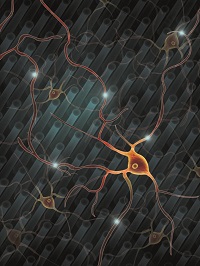 |
| Stem cells growing in a plush, carpet-like environment made up of "threads" of a Silly Putty ingredient, polydimethylsiloxane--Courtesy of Ye Tao, Rose Anderson, Yubing Sun, and Jianping Fu |
A softer, plusher environment made of a key ingredient in Silly Putty may allow embryonic stem cells to grow faster and produce more specialized cells than traditional methods of making stem cells.
The findings could help scientists develop a more efficient way to produce stem cells for use in experimental therapies for diseases such as amyotrophic lateral sclerosis, Huntington's and Alzheimer's.
Scientists from the University of Michigan grew embryonic stem cells on a soft, ultrafine carpet made up of microscopic posts of the Silly Putty component polydimethylsiloxane, which belongs to a group of compounds commonly known as silicones. These posts act as the "threads" of the carpet. By varying the post height, researchers found that they can control the stiffness of the surface on which they grow the cells. For example, shorter posts are firmer and taller ones are softer.
The team observed that when grown in the softer carpets with taller microposts, the stem cells differentiated into spinal cord cells much faster and more often than those they grew on the stiffer surfaces. After 23 days, the colonies of spinal cord cells that grew on the softer carpets with taller posts were four times more pure and 10 times larger than those growing on either traditional plates or rigid carpets. The results appear in Nature Materials.
"This is extremely exciting," said Jianping Fu, an assistant professor of mechanical engineering at the University of Michigan. "To realize promising clinical applications of human embryonic stem cells, we need a better culture system that can reliably produce more target cells that function well. Our approach is a big step in that direction, by using synthetic microengineered surfaces to control mechanical environmental signals."
Fu and colleagues believe their study is the first to directly associate physical environment, as opposed to chemical signals, to human embryonic stem cell differentiation.
Dr. Eva Feldman, a professor of neurology at the University of Michigan, is already using Fu's stem cell growing technique in an attempt to make fresh neurons from patients' own cells. Feldman believe that stem cell therapies could help patients with nerve cell damage from diseases like amyotrophic lateral sclerosis, or ALS, grow new nerve cells.
- read the press release
- see the study abstract